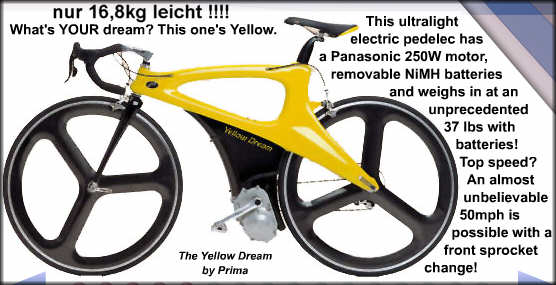hmm.. i see
question:
inwheel-hub-motor
it goes 25mph at flat and full throttle
now there is a hill, a very steep hill
i still have full throttle
but of course 25mph are not possible anymore..
let say the hill is REALY steep, so the bike slows down to 10mph at full throttle..
that must be some horrible efficience than..
at least at this situations, a geared motor must be much better in efficience..
do you agree ?
i have just this diagramm for supporting/nourish my thoughts:
http://www.kraeuterbutter.at/Bilder2/sonstiges/Messwerte Mabuchi Lehner/Mabuchi RS-540SH-5045_Bild3.jpeg
lets assume the 15.000rpm of the motor are ~25mph (running flat)
efficience near 70% (~6A current)
outputpower: ~50Watt
the same motor given so much load, that rpm drops to 6000rpm (would be ~10mph) --> efficience goes down to 25% !!!
(current rises to ~25A)
outputpower: ~95Watt
you see what i mean ?
now the same motor - geared 1:2 for easy calculation..
we still want to reach the hills top with 10mph
but the motor is now allowed to spin with 12000rpm to reach that..
for that the diagramm says:
efficience ~60-65%
current ~12A
outputpower: ~90Watt
conclusio:
1.) the motor is of course to small for a bike, but the physics will not be that different.. (lets assume, its for a children-bike with 35kg light driver

)
2.) power at most efficience is 50Watt, running on flat surface
3.) on the hill: without gear you get 95Watt Power from the motor..
efficience down at 25%, ~25A current needed !!
4.) the same motor, the same hill, the same speed to run up the hill
--> but 1:2 geared
you get now 90Watt power
efficience at 60-65%
only 12A current needed..
(comment: its only 90Watt instead of 95Watt, because of the 1:2 gearing i used for the calculation..
so: a little other gearing would be needed)
everything of course without looses of chain, etc. (but should not be that great, a chain runs very efficient)
to sum up:
up the hill, the motor without gear will have 6% more power
but needs for that 100% more current
or other way round:
the geared motor will have ~6% less power, but needs only halfe the current
you see what i mean ?
when you use a overpowered motor, that never comes into the abashment of forced down at fullthrottle to less than halfe the rpm it normaly has at fullthrottle and "low load" efficience-loose compared to geared one is low..
but when you have a steep hill problem becomes bigger and bigger..
then the motor may suck 1000Watt and only 300-500Watt come to the wheel
so my question:
on a steep hill, let say 30%
a motor that runs at flat surface with 25mph will be very inefficient when not regeared for that slope
or not ?








